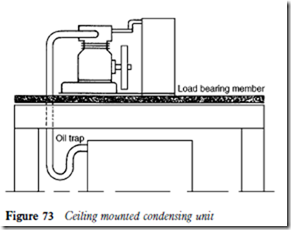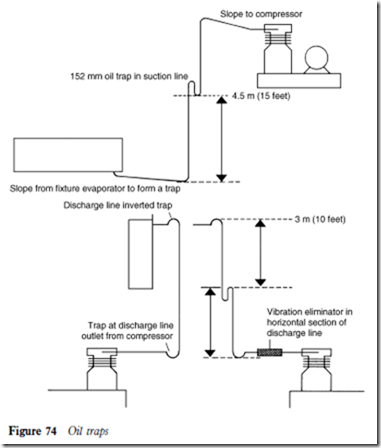Oil traps
Suct on l ne o l traps
High suction line risers will inevitably lead to compressor lubrication problems if provision for oil return is not made. When the compressor is located above the evaporator, an oil trap must be installed.
During low suction pressure operation at the end of a cooling cycle, the oil will tend to separate from the suction vapour and cling to the surface of the tubing. It will drain back to become entrained in the evaporator during off cycles. The oil trap will collect the oil, and when the compressor restarts the higher suction pressure will return most of it to the compressor.
An excessive amount of oil in the evaporator will reduce the evaporator capacity.
Oil traps can be of a U formation or of the barrel type; both perform the same function. A typical suction oil trap, formed in the suction line during installation, is depicted in Figure 73. On larger installations the higher suction riser will need more oil traps, as depicted in Figure 74.
D scharge l ne o l traps
These are installed or formed in high discharge risers (Figure 74) to prevent oil from draining back to the compressor head during off cycles. If it is present in the head a dynamic pressure will develop as the compressor restarts,
resulting in damage to the compressor valves, blown gaskets and possibly broken connecting rods and drive shafts.

